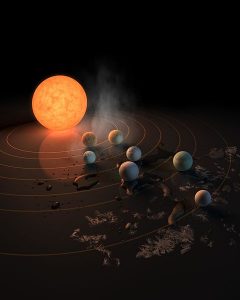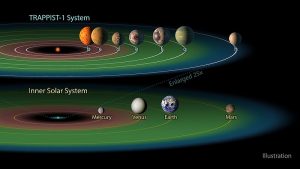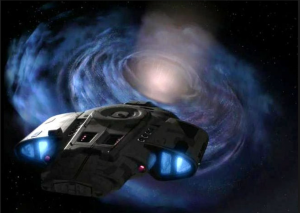
The Expanding Universe–growing, growing, growing with all the astral bodies staying in their relative same place. (Image: Courtesy of SLAC and Nicolle Rager)
Imagine a balloon with polka dots being inflated. As one blows air into the balloon, the dots move further away from each other. Easy enough, this is how scientists describe our universe.
The idea of constant expanding cosmos was introduced by Edwin Hubble in 1929. He found that the further galaxies are from Earth, the faster they appear to be moving. This speed was named after the scientist as the Hubble constant.
A new estimate of the universe expansion rate has been realized by Sherry Suyu and Frédéric Courbin in January 2017. They used variations on quasars reflections (very luminous discs of matter moving around supermassive black holes at the middle of galaxies) to find out how fast they are moving away from Earth. The study concludes that speed at which the space is expanding is 71.9 ± 2.7 kilometres per second.
This finding has an agreement with the last Hubble constant calculation performed in 2016 (73.24 ± 1.74 kilometres per second). However, these two approximations significantly differ with the Hubble constant realized in 2015 (66.93 ± 0.62 kilometres per second). Scientist are not sure about the reason that might explain these discrepancy. However, three new theories have arisen.
The first theory states that dark energy (a still unknown, and little studied energy type in space) is making the universe expand. This theory explains that dark energy is been accumulated and becoming stronger over time. For this reason, dark energy might be moving bodies in the space away from each other at a faster rate.
The second theory analyzes the possibility that dark matter (an invisible space matter that makes astronomical objects move slower) have unknown qualities that make our cosmos expand constantly at an increasing rate.
The third and last theory indicates that Einstein’s Theory of Gravity might be wrong, since celestial bodies are constantly moving away from us at an increasing rate rather than staying at a constant range due to gravity pull.
In summary, we are now aware that the universe is expanding at an increasing rate and there is a new method to estimate this expansion rate. However, I came out with a new question. Is the cosmos expanding forever or it has a limit? This is a topic for our next blog post!





